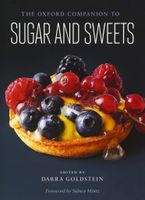🔥 Try our grilling cookbooks and save 25% on ckbk membership with code BBQ25 🔥
The Magic of Lollies
Published 2015
When confectionery historian Laura Mason observed in Sugar-Plums and Sherbet that “sugar is fantasy land” (1998, p. 19), she could have had in mind Antipodean lolly counters, where a seemingly infinite range of shapes enables parents to turn children’s birthday cakes into oceans, jungles, moonscapes, and almost anything else. Perhaps a marker of difference for Australian confectionery is the prevalence of animals; if it flies, crawls, slithers, or runs, it may be found in miniature form at the lolly counter. The candy manufacturer A. W. Allen’s starch jellies, especially, have come in every shape imaginable: rats, cats, snakes, sharks, frogs, witchetty grubs, and so on. To this dazzling array add Allen’s Freckles and Steam Rollers; Hoadley’s Violet Crumbles and PollyWaffles; Mastercraft’s Golden Roughs, Redskins, and Bobbies; Plaistowe’s Choo Choo Bars; Riviera’s Fags; Scanlen’s Blackjack; Griffiths’s Kool Mints; and Lagoon’s Sherbet Bombs. A similar spectacle awaits children at New Zealand lolly counters, which offer Pineapple Lumps, Cola Rollers, Whittaker’s Peanut Slab, Chocolate Fish, Jet Planes for re-enacting scenes from Top Gun, and Fruit Puffs for making the ubiquitous Lolly Cake.
Become a Premium Member to access this page
Unlimited, ad-free access to hundreds of the world’s best cookbooks
Over 160,000 recipes with thousands more added every month
Recommended by leading chefs and food writers
Powerful search filters to match your tastes
Create collections and add reviews or private notes to any recipe
Swipe to browse each cookbook from cover-to-cover
Manage your subscription via the My Membership page
Part of
Advertisement
Related Recipes
-
-
-
-
Related Reference
-
-
-
-
Advertisement



